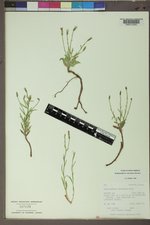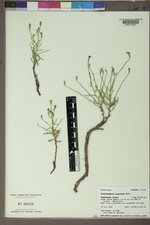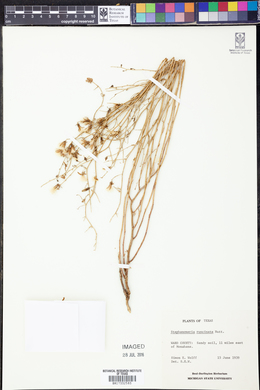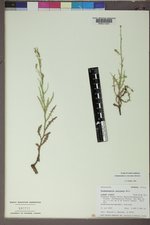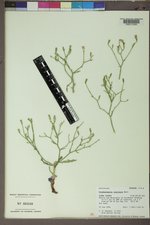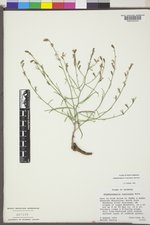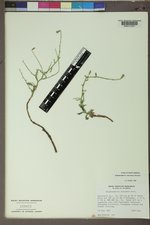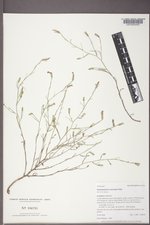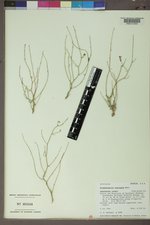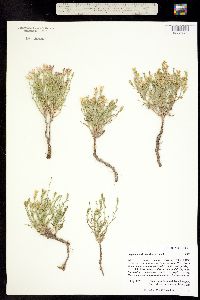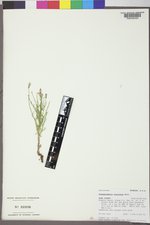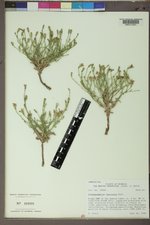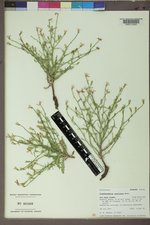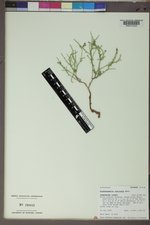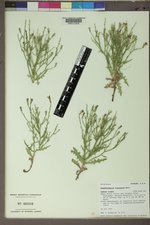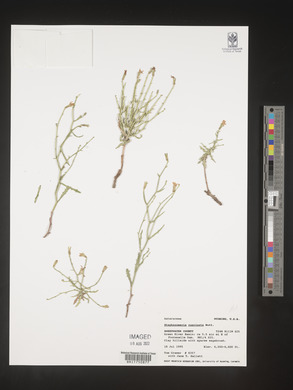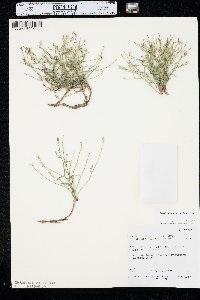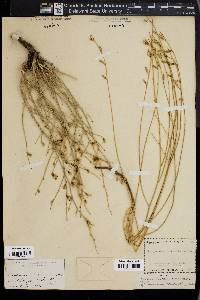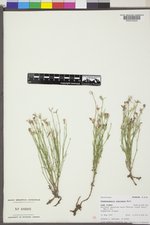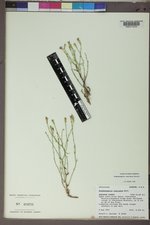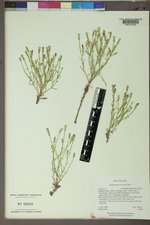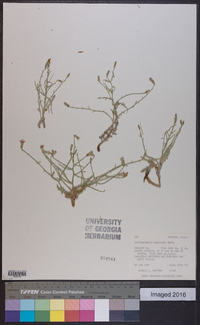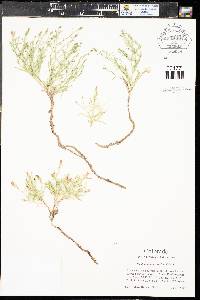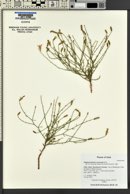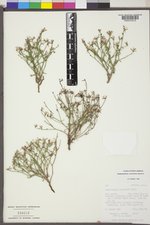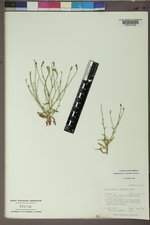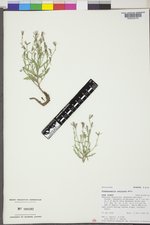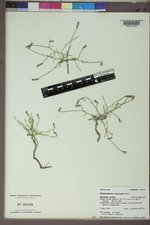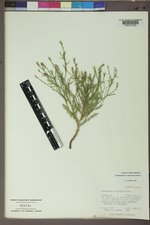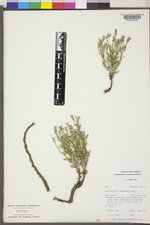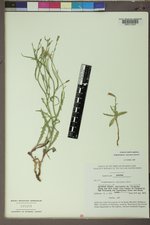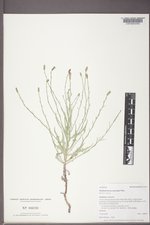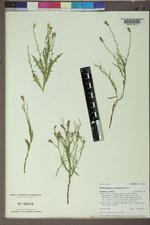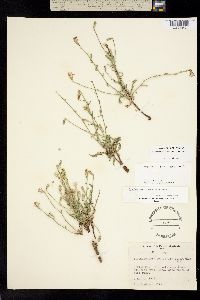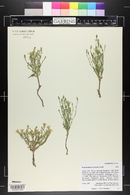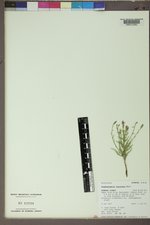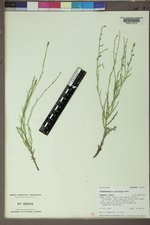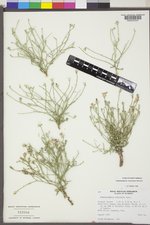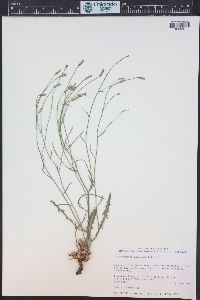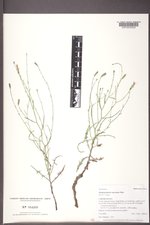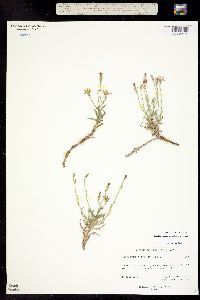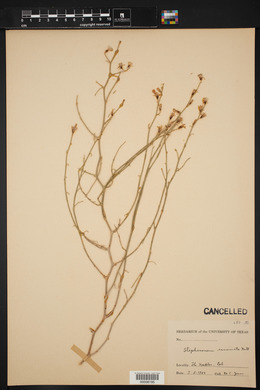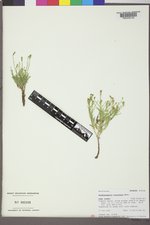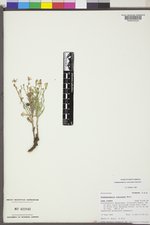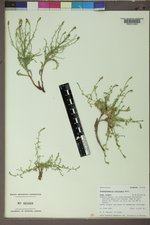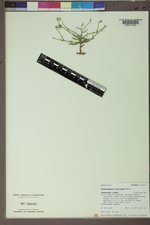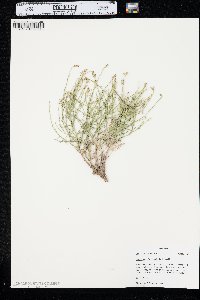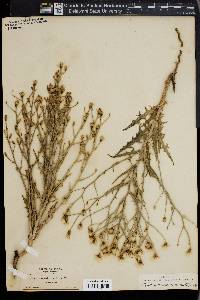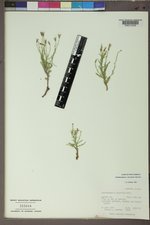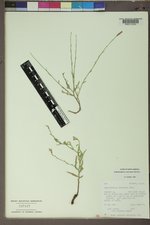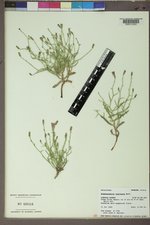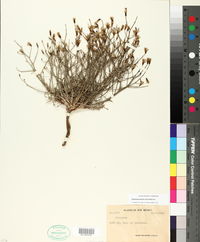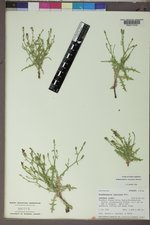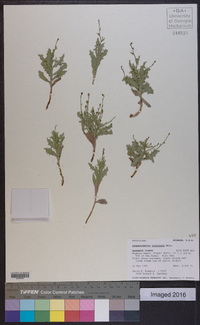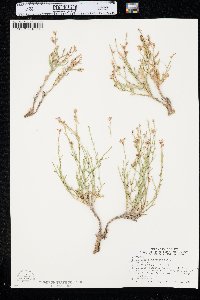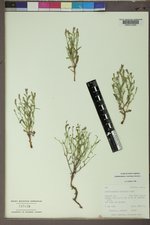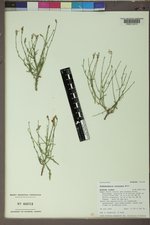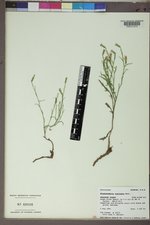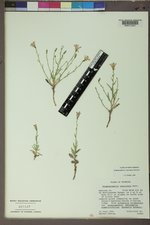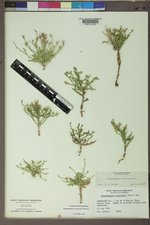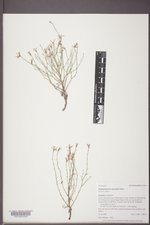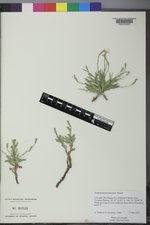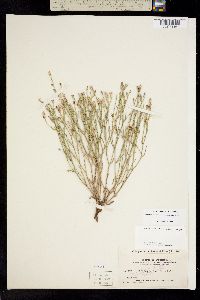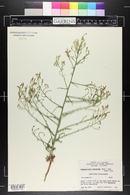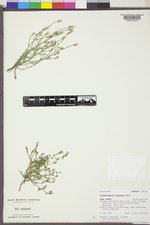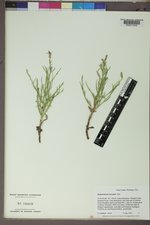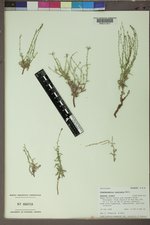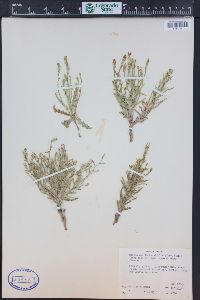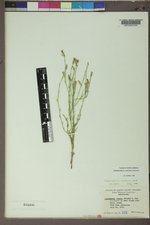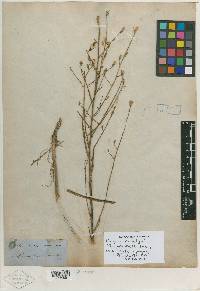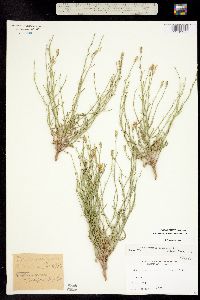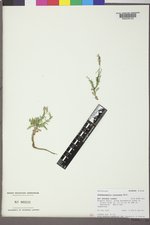
|
|
|
|
Family: Asteraceae
Flowering-Straw
|
Perennials, 10-20(-25) cm (rhizomes stout). Stems erect or ascending, glabrous or weakly scabrous-puberulent. Leaves usually withered at flowering; basal blades narrowly lanceolate, markedly runcinate, 3-7 cm, margins pinnately lobed (faces glabrous or weakly scabrous-puberulent). cauline much reduced, bractlike . Heads borne singly on branch tips . Peduncles 10-50 mm (usually minutely bracteolate). Calyculi of appressed bractlets (unequal, lengths to 1/2 phyllaries). Involucres 9-12(-13) mm (phyllaries 5-6, glabrous). Florets 5-6. Cypselae tan, 3-5 mm, faces smooth to slightly bumpy, grooved; pappi of 15-25, white bristles (persistent), wholly plumose. 2n = 16. Flowering June-Sep. Open sandy places, eroded siltstones, clay flats, alkali soils; 600-1800 m; Alta., Sask.; Colo., Mont., Nebr., N.Dak., Utah, Wyo. Stephanomeria runcinata grows in the upper Great Plains and adjacent intermontane valleys.
FNA 2006, Jepson 2012 Duration: Perennial Nativity: Native Lifeform: Subshrub General: Herbaceous perennials, to 25 cm tall, stems erect or ascending, herbage glabrous or weakly scabarous-puberulent, plants with milky sap and stout rhizomes. Leaves: Alternate, narrowly lanceolate, 3-7 cm long, sharply pinnately lobed or cleft, with the segments directed downwards or backwards towards the base of the leaf (runcinate), faces glabrous or weakly scabrous-puberulent, cauline blades becoming much reduced and bractlike near stem tips, basal usually withered at flowering. Flowers: Pink, lavender, or white, often purple-tinged below, florets in clusters of 5-6 in heads with only ray flowers, (liguliflorous), involucres cylindric, 9-13 mm long, phyllaries glabrous, 5-6 in 1-2 series, calyculi of appressed, unequal bractlets, bracts about half as long as the phyllaries, receptacles flat, usually smooth and glabrous, epaleate, heads borne singly on branch tips, peduncles 10-50 mm long and usually minutely bracteolate. Fruits: Cypselae (achenes) tan, cylindric, 5-angled, each face generally with long, narrow, central groove, 3-5 mm long, sometimes lightly curved, faces smooth to slightly bumpy and grooved. Pappi of 15-25 persistent, wholly plumose white bristles. Ecology: Found on eroded siltstones, clay flats, and alkali soils, in open sandy places, from 2,000-6,000 ft (610-1829 m); flowering June-September. Distribution: Alberta, Saskatchewan, Montana, North Dakota, Wyoming, Nebraska, Utah, Colorado. Ethnobotany: Milky sap used for sore eyes. Synonyms: None Editor: LCrumbacher2012 Etymology: Stephanomeria is derived from the Greek stephane, "wreath or crown," and meros, "division", while runcinata means saw-toothed, with the teeth pointing toward the base. |
This project was made possible in part by the Institute of Museum and Library Services [MG-70-19-0057-19].
Powered by Symbiota

